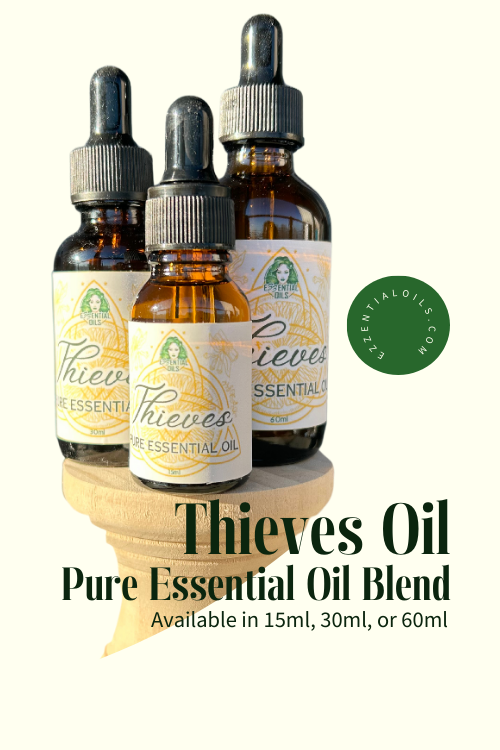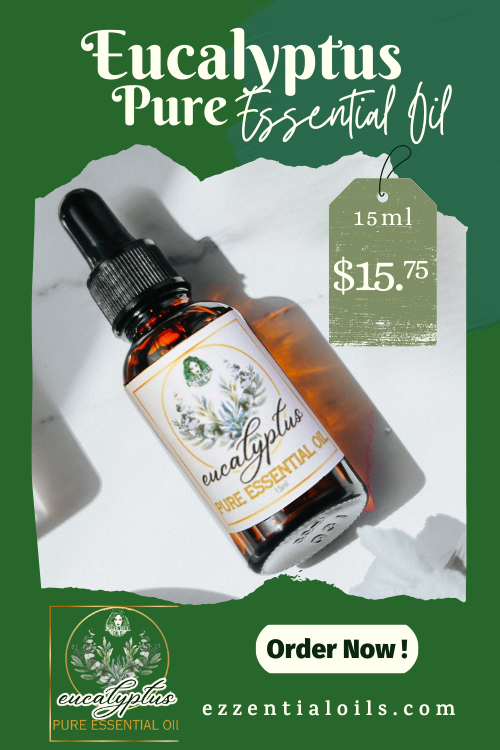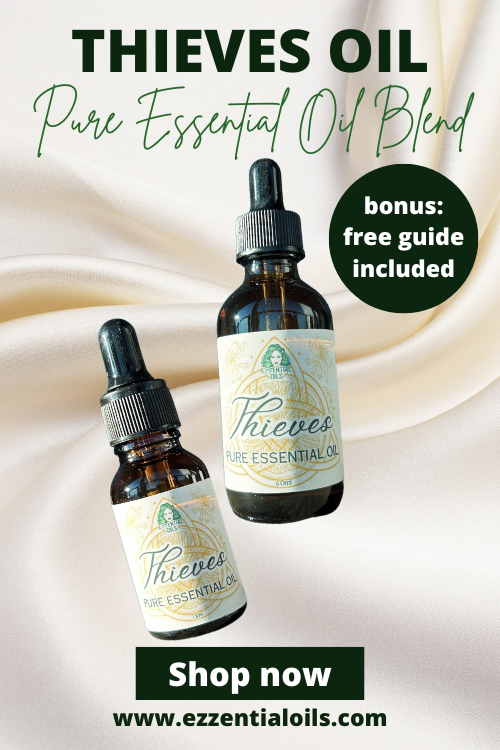The Ultimate Blending Guide:
Mastering the Art of Essential Oil Blending
Essential oil blending is an exciting and rewarding aspect of aromatherapy. By combining oils with different properties, scents, and therapeutic effects, you can create your own personalized blends that suit your needs. Whether you're aiming to relax, boost energy, or tackle a specific health concern, blending essential oils opens up endless possibilities. In this guide, we'll walk you through the basics of blending, explore different techniques, and help you understand how to create well-balanced blends that are both functional and aromatic.
What Is Essential Oil Blending?
Essential oil blending is the art of combining two or more essential oils to create a unique fragrance and maximize the therapeutic benefits. The goal is to combine oils in a way that complements each other, enhances their individual properties, and creates a harmonious aroma. You can blend oils for a variety of purposes, from relaxation and emotional support to improving focus or boosting immunity. It's a fun and creative way to experiment with different oils and tailor blends to your personal needs.
Benefits of Blending Essential Oils
Blending oils allows you to customize your aromatherapy experience in several ways. First and foremost, blending enables you to create oils that are suited to your specific needs. Whether you need help with stress relief, focus, or sleep, you can select oils that target those issues.
Blended oils also offer enhanced effectiveness. The synergy created when oils work together is often more powerful than when they are used alone. Some oils, for example, may help amplify the benefits of others, creating a stronger overall effect. And, of course, blending gives you the freedom to create unique and personalized scents that are perfectly suited to your preferences, all without relying on synthetic fragrances.
Understanding the Basics of Blending
To start blending like a pro, it's important to grasp a few fundamental principles.
Top, Middle, and Base Notes: Essential oils are classified into three categories based on their evaporation rates: top, middle, and base notes. Top notes are the first to evaporate and provide the initial scent. Middle notes, or heart notes, form the body of the fragrance. Base notes are heavier and linger the longest, giving depth and richness to the blend.
Blending Ratios: When blending, a good rule of thumb is to use 3 parts top note, 2 parts middle note, and 1 part base note. This creates a well-rounded blend, with the top notes providing a bright initial scent and the base notes creating lasting depth.
Dilution Guidelines: Essential oils are highly concentrated and should always be diluted with a carrier oil (like jojoba or almond oil) before being applied to the skin. For diffusers, it's typically 3-5 drops per 100 ml of water, but always check the specific oil's recommendations.
Choosing a Blending Technique
There are various ways to approach blending based on different factors: scent family, evaporation rate, or therapeutic effects.
Scent Families: Each essential oil belongs to one of several scent families, such as floral, citrus, woodsy, spicy, or herbal. A great way to blend is by choosing oils from the same family, as these tend to complement each other. For example, blending lavender (floral) with geranium (floral) creates a harmonious, soothing scent. On the other hand, mixing oils from different families (like citrus and woody) can lead to more complex and unique scents.
Evaporation Rate: The evaporation rate of an oil affects how long its scent lingers. Top notes like citrus oils (lemon, orange) evaporate quickly, giving an immediate burst of fragrance. Middle notes like lavender last a bit longer, while base notes like sandalwood or patchouli provide a deep, lingering aroma. For a balanced blend, pair fast-evaporating top notes with slower base notes.
Therapeutic Effects: Another approach to blending is selecting oils based on their therapeutic properties. Whether you're looking to uplift your mood, promote relaxation, or aid digestion, certain oils are known for specific therapeutic benefits. By blending oils with complementary effects, you can create an aromatherapy experience that targets both physical and emotional well-being.
Therapeutic Effects of Essential Oils
Essential oils are known for their wide range of therapeutic benefits. Here's a breakdown of some common therapeutic effects you can consider when blending oils:
Aphrodisiac: Oils like ylang-ylang, jasmine, and sandalwood are known to stimulate desire and passion, making them perfect for romantic or intimate settings.
Anti-inflammatory: Chamomile, lavender, and frankincense are excellent choices for reducing inflammation and soothing sore muscles or irritated skin.
Antiseptic/Antimicrobial: Oils like tea tree, eucalyptus, and oregano are great for supporting the immune system, fighting bacteria, and helping with respiratory issues.
Balancing: Geranium, patchouli, and bergamot help to stabilize mood, balance hormones, and create an overall sense of equilibrium.
Calming: Lavender, chamomile, and vetiver are soothing oils that help calm the nervous system, reduce stress, and promote restful sleep.
Carminative: Peppermint, fennel, and ginger support digestion, relieve bloating, and ease digestive discomfort.
Detoxifying: Grapefruit, lemon, and rosemary are excellent oils for stimulating the body's natural detox processes and promoting healthy circulation.
Stimulating: Peppermint, rosemary, and basil are energizing oils that enhance focus, concentration, and mental clarity.
Uplifting: Citrus oils like orange, lemon, and lemongrass can boost your mood, reduce stress, and promote a positive, energetic outlook.
Tools and Supplies for Blending
To start blending, you'll need a few essential tools:
Droppers: For accurate measurements of essential oils.
Glass Bottles: Store your blends in dark glass bottles to protect them from sunlight and preserve their potency.
Measuring Cups or Spoons: To measure carrier oils and other ingredients.
Labels: It's essential to label your creations with the date and ingredients to keep track of what you've made.
Mixing Bowls: For larger blends, especially if you're mixing oils for candles or lotions.
It's also important to have a clean, organized space to blend, as it helps keep things efficient and enjoyable.
The Art of Crafting a Blend
Creating a well-balanced blend requires a bit of trial and error. Here's a simple step-by-step process:
1. Identify Your Purpose: Think about what you want the blend to do. Is it for relaxation? Focus? Skin care? Knowing your purpose will guide you in selecting the right oils.
2. Choose Your Oils: Select oils based on their therapeutic effects and scent families.
3. Start Small: Begin with a small batch to test the scent. Start with a few drops of each oil and adjust the amounts as needed.
4. Adjust Ratios: Play around with the ratios to find the right balance. Remember to start with a larger portion of the top note and less of the base note.
5. Record Your Blend: Keep track of the oils and amounts you've used. This will help you recreate your favourite blends in the future.
Blending for Specific Purposes
Here are a few recipe ideas based on different needs:
Relaxation Blend: Lavender, chamomile, and ylang-ylang – perfect for unwinding after a long day.
Focus Boost: Peppermint, rosemary, and lemon – a great combo for studying or staying productive.
Immune Defense: Tea tree, eucalyptus, and clove – powerful oils for supporting your immune system.
Sleep Blend: Lavender, cedarwood, and sandalwood – ideal for a peaceful night's sleep.
Mood Lifter: Grapefruit, orange, and lemongrass – great for boosting energy and happiness.
Common Mistakes to Avoid
As you start blending, keep these tips in mind:
Avoid Overpowering Scents: Strong oils like clove or cinnamon can easily overpower a blend, so use them sparingly.
Don't Skip Dilution: Always dilute your essential oils with a carrier oil when applying topically. This helps prevent skin irritation.
Test Your Blends First: Start with small batches and test them out to ensure you like the final result before making larger quantities.
Store Properly: Store your blends in airtight, dark glass bottles to prevent oxidation and maintain their potency.
Recipes for Beginners
If you're new to blending, here are a few simple recipes to get you started:
Simple Relaxation Blend: 3 drops lavender, 2 drops chamomile, 1 drop ylang-ylang.
Focus Boost Blend: 3 drops lemon, 2 drops peppermint, 1 drop rosemary.
Immune Defense Blend: 2 drops tea tree, 2 drops eucalyptus, 1 drop clove.
Uplifting Perfume: 3 drops orange, 2 drops bergamot, 1 drop sandalwood.
Storing and Preserving Your Blends
To ensure the longevity of your blends, store them in dark glass containers away from direct sunlight. Most essential oil blends last for about six months to a year, depending on the oils used. Label each blend with the date and ingredients so you can track freshness and easily recreate your favorite formulas.
Experimenting and Expanding
Once you get the hang of blending, feel free to experiment with new oils and combinations. Keep track of your recipes in a blending journal, so you can refine and improve your blends over time. Don't be afraid to step outside the box and try exotic oils like neroli or frankincense, and incorporate your blends into other DIY projects, like candles, soaps, or body care products.
Essential oil blending is a fun and fulfilling practice that allows you to tailor your aromatherapy experience to suit your needs. With the right tools, some creativity, and a little bit of experimentation, you'll be able to craft blends that enhance your well-being and brighten your day. Keep exploring, have fun, and let your senses guide you on this aromatic journey!
Please note, the International Federation of Aromatherapists do not recommend that Essential Oils be taken internally, unless under the supervision of a Medical Doctor, who is also qualified in clinical Aromatherapy. In addition, Essential Oils must be properly diluted before use, in order to avoid any damages to property or adverse physical effects (including injury or bodily harm).
This article is for information purposes only. All Ezzential Oils products are for external use only unless otherwise indicated. This information is not intended to diagnose, treat, cure, or prevent any disease, and it should not be used by anyone who is pregnant or under the care of a medical practitioner. Please refer to our policies for further details, and our disclaimer below.
What Is Essential Oil Blending?
Essential oil blending is the art of combining two or more essential oils to create a unique fragrance and maximize the therapeutic benefits. The goal is to combine oils in a way that complements each other, enhances their individual properties, and creates a harmonious aroma. You can blend oils for a variety of purposes, from relaxation and emotional support to improving focus or boosting immunity. It's a fun and creative way to experiment with different oils and tailor blends to your personal needs.
Benefits of Blending Essential Oils
Blending oils allows you to customize your aromatherapy experience in several ways. First and foremost, blending enables you to create oils that are suited to your specific needs. Whether you need help with stress relief, focus, or sleep, you can select oils that target those issues.
Blended oils also offer enhanced effectiveness. The synergy created when oils work together is often more powerful than when they are used alone. Some oils, for example, may help amplify the benefits of others, creating a stronger overall effect. And, of course, blending gives you the freedom to create unique and personalized scents that are perfectly suited to your preferences, all without relying on synthetic fragrances.
Understanding the Basics of Blending
To start blending like a pro, it's important to grasp a few fundamental principles.
Top, Middle, and Base Notes: Essential oils are classified into three categories based on their evaporation rates: top, middle, and base notes. Top notes are the first to evaporate and provide the initial scent. Middle notes, or heart notes, form the body of the fragrance. Base notes are heavier and linger the longest, giving depth and richness to the blend.
Blending Ratios: When blending, a good rule of thumb is to use 3 parts top note, 2 parts middle note, and 1 part base note. This creates a well-rounded blend, with the top notes providing a bright initial scent and the base notes creating lasting depth.
Dilution Guidelines: Essential oils are highly concentrated and should always be diluted with a carrier oil (like jojoba or almond oil) before being applied to the skin. For diffusers, it's typically 3-5 drops per 100 ml of water, but always check the specific oil's recommendations.
Choosing a Blending Technique
There are various ways to approach blending based on different factors: scent family, evaporation rate, or therapeutic effects.
Scent Families: Each essential oil belongs to one of several scent families, such as floral, citrus, woodsy, spicy, or herbal. A great way to blend is by choosing oils from the same family, as these tend to complement each other. For example, blending lavender (floral) with geranium (floral) creates a harmonious, soothing scent. On the other hand, mixing oils from different families (like citrus and woody) can lead to more complex and unique scents.
Evaporation Rate: The evaporation rate of an oil affects how long its scent lingers. Top notes like citrus oils (lemon, orange) evaporate quickly, giving an immediate burst of fragrance. Middle notes like lavender last a bit longer, while base notes like sandalwood or patchouli provide a deep, lingering aroma. For a balanced blend, pair fast-evaporating top notes with slower base notes.
Therapeutic Effects: Another approach to blending is selecting oils based on their therapeutic properties. Whether you're looking to uplift your mood, promote relaxation, or aid digestion, certain oils are known for specific therapeutic benefits. By blending oils with complementary effects, you can create an aromatherapy experience that targets both physical and emotional well-being.
Therapeutic Effects of Essential Oils
Essential oils are known for their wide range of therapeutic benefits. Here's a breakdown of some common therapeutic effects you can consider when blending oils:
Aphrodisiac: Oils like ylang-ylang, jasmine, and sandalwood are known to stimulate desire and passion, making them perfect for romantic or intimate settings.
Anti-inflammatory: Chamomile, lavender, and frankincense are excellent choices for reducing inflammation and soothing sore muscles or irritated skin.
Antiseptic/Antimicrobial: Oils like tea tree, eucalyptus, and oregano are great for supporting the immune system, fighting bacteria, and helping with respiratory issues.
Balancing: Geranium, patchouli, and bergamot help to stabilize mood, balance hormones, and create an overall sense of equilibrium.
Calming: Lavender, chamomile, and vetiver are soothing oils that help calm the nervous system, reduce stress, and promote restful sleep.
Carminative: Peppermint, fennel, and ginger support digestion, relieve bloating, and ease digestive discomfort.
Detoxifying: Grapefruit, lemon, and rosemary are excellent oils for stimulating the body's natural detox processes and promoting healthy circulation.
Stimulating: Peppermint, rosemary, and basil are energizing oils that enhance focus, concentration, and mental clarity.
Uplifting: Citrus oils like orange, lemon, and lemongrass can boost your mood, reduce stress, and promote a positive, energetic outlook.
Tools and Supplies for Blending
To start blending, you'll need a few essential tools:
Droppers: For accurate measurements of essential oils.
Glass Bottles: Store your blends in dark glass bottles to protect them from sunlight and preserve their potency.
Measuring Cups or Spoons: To measure carrier oils and other ingredients.
Labels: It's essential to label your creations with the date and ingredients to keep track of what you've made.
Mixing Bowls: For larger blends, especially if you're mixing oils for candles or lotions.
It's also important to have a clean, organized space to blend, as it helps keep things efficient and enjoyable.
The Art of Crafting a Blend
Creating a well-balanced blend requires a bit of trial and error. Here's a simple step-by-step process:
1. Identify Your Purpose: Think about what you want the blend to do. Is it for relaxation? Focus? Skin care? Knowing your purpose will guide you in selecting the right oils.
2. Choose Your Oils: Select oils based on their therapeutic effects and scent families.
3. Start Small: Begin with a small batch to test the scent. Start with a few drops of each oil and adjust the amounts as needed.
4. Adjust Ratios: Play around with the ratios to find the right balance. Remember to start with a larger portion of the top note and less of the base note.
5. Record Your Blend: Keep track of the oils and amounts you've used. This will help you recreate your favourite blends in the future.
Blending for Specific Purposes
Here are a few recipe ideas based on different needs:
Relaxation Blend: Lavender, chamomile, and ylang-ylang – perfect for unwinding after a long day.
Focus Boost: Peppermint, rosemary, and lemon – a great combo for studying or staying productive.
Immune Defense: Tea tree, eucalyptus, and clove – powerful oils for supporting your immune system.
Sleep Blend: Lavender, cedarwood, and sandalwood – ideal for a peaceful night's sleep.
Mood Lifter: Grapefruit, orange, and lemongrass – great for boosting energy and happiness.
Common Mistakes to Avoid
As you start blending, keep these tips in mind:
Avoid Overpowering Scents: Strong oils like clove or cinnamon can easily overpower a blend, so use them sparingly.
Don't Skip Dilution: Always dilute your essential oils with a carrier oil when applying topically. This helps prevent skin irritation.
Test Your Blends First: Start with small batches and test them out to ensure you like the final result before making larger quantities.
Store Properly: Store your blends in airtight, dark glass bottles to prevent oxidation and maintain their potency.
Recipes for Beginners
If you're new to blending, here are a few simple recipes to get you started:
Simple Relaxation Blend: 3 drops lavender, 2 drops chamomile, 1 drop ylang-ylang.
Focus Boost Blend: 3 drops lemon, 2 drops peppermint, 1 drop rosemary.
Immune Defense Blend: 2 drops tea tree, 2 drops eucalyptus, 1 drop clove.
Uplifting Perfume: 3 drops orange, 2 drops bergamot, 1 drop sandalwood.
Storing and Preserving Your Blends
To ensure the longevity of your blends, store them in dark glass containers away from direct sunlight. Most essential oil blends last for about six months to a year, depending on the oils used. Label each blend with the date and ingredients so you can track freshness and easily recreate your favorite formulas.
Experimenting and Expanding
Once you get the hang of blending, feel free to experiment with new oils and combinations. Keep track of your recipes in a blending journal, so you can refine and improve your blends over time. Don't be afraid to step outside the box and try exotic oils like neroli or frankincense, and incorporate your blends into other DIY projects, like candles, soaps, or body care products.
Essential oil blending is a fun and fulfilling practice that allows you to tailor your aromatherapy experience to suit your needs. With the right tools, some creativity, and a little bit of experimentation, you'll be able to craft blends that enhance your well-being and brighten your day. Keep exploring, have fun, and let your senses guide you on this aromatic journey!
Safety Information
Please note, the International Federation of Aromatherapists do not recommend that Essential Oils be taken internally, unless under the supervision of a Medical Doctor, who is also qualified in clinical Aromatherapy. In addition, Essential Oils must be properly diluted before use, in order to avoid any damages to property or adverse physical effects (including injury or bodily harm).
This article is for information purposes only. All Ezzential Oils products are for external use only unless otherwise indicated. This information is not intended to diagnose, treat, cure, or prevent any disease, and it should not be used by anyone who is pregnant or under the care of a medical practitioner. Please refer to our policies for further details, and our disclaimer below.













